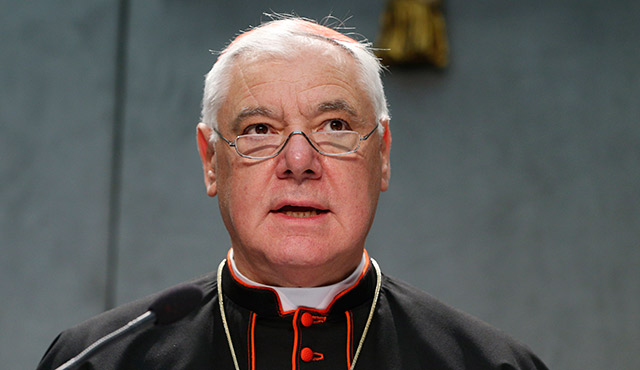More than 50 years after the Church approved the practice of cremation for Catholic funerals as part of the Vatican II reforms, there is still a level of uncertainty regarding just what is, or is not, permitted about the practice. This, in a day when cremation is becoming more accepted and common throughout the funeral industry as people seek simpler, more economical methods of handling the remains of deceased loved ones than the traditional full-body burial.
New information about the Church’s views became available to Catholics last October. The document “Ad resurgendum cum Christo” (To Rise with Christ) was issued by the office of the Congregation for the Doctrine of the Faith and the portions regarding the disposition of cremated remains have received the most interest and attention. The document specifically states the Church’s prohibitions against the practices of keeping the ashes of a loved one in the home or of scattering the ashes over land or water, and must be properly interred in a cemetery or other appropriate sacred site.
The document states, “Following the most ancient Christian tradition, the Church insistently recommends that the bodies of the deceased be buried in cemeteries or other sacred places. In memory of the death, burial and resurrection of the Lord, the mystery that illumines the Christian meaning of death, burial is above all the most fitting way to express faith and hope in the resurrection of the body.”
The document further states that the act of cremation does not conflict with the Christian doctrine of the soul’s immortality, or that of the resurrection of the body, saying specifically, ”The Church raises no doctrinal objections to this practice, since cremation of the deceased’s body does not affect his or her soul, nor does it prevent God, in his omnipotence, from raising up the deceased body to new life.”
So how did the Church arrive at this point where it felt the need to restate its position on a practice that it had already approved more than half a century ago? Michael Wesner, director of cemeteries for the Diocese of Orange, believes that rather than making actual changes, the Church felt the need to communicate its original ideas more clearly and effectively.
“I think what happened is that the Church was not real effective at communicating their position on the various ways of disposition with cremains, such as scattering or keeping the cremains at home, which is not Church teaching,” Wesner says. “The Church’s teachings say to treat cremated remains in the same manner as you do with a body, which is burial in a cemetery, not keeping them at home, not scattering them. Without that clear communication, many out there in the communities were assuming that scattering is okay, or that keeping cremated remains in the home is okay. Even some of the clergy weren’t clear on that.”
Adherence to longstanding traditions by older generations of Catholic clergy and lay people has also led to some of the confusion surrounding the Church’s positions on cremation. “Catholic tradition over the years has been to frown on cremation and really preferred the traditional decorum of the body and the body being buried and the resurrection,” says Wesner. “The Church has become more accepting of cremation, but it wasn’t well acknowledged out there in public. There’s so much misinformation out there from the belief that the Church still prohibits it in the minds of some to the belief that the Church now allows everything, including scattering and keeping them on the mantle at home.”
As to the prohibitions against keeping cremains in the home or scattering them in nature, there are options open to local Catholics who may wish to remedy this situation. “We’ve established what we call a Remembrance Program,” says Wesner. “Let’s say a husband passes away and the wife keeps the cremated remains at home and then [she] passes away and the kids say, ‘What do we do with these?’ They could get abandoned and that’s what we fear. We established the Remembrance Program where our three major Catholic cemeteries, Holy Sepulcher, Ascension and Good Shepherd will accept those cremated remains and inter them at no cost for the sake of honoring the deceased remains and giving them a dignified proper burial at a cemetery.” Established in November 2015, the program has handled approximately 20 such sets of cremated remains since then.
As to remains that have already been scattered, Wesner says that the Diocese offers a cenotaph. “We put their name into an area of the cemetery to remember them, to memorialize.” The cremated remains and body are not there but the placing of the name gives the loved ones of the deceased a place to visit, pray and reflect at a Catholic cemetery.
Wesner and his professional colleagues seem well prepared to deal with a future where Catholic cremations are more common. “In our Catholic cemeteries anywhere between 35 and 39 percent of our burials are cremations,” he says. “The silver lining is that it provides us more area to bury people at cemeteries so it gives the cemetery a longer life because we need less space to bury cremated remains.”

